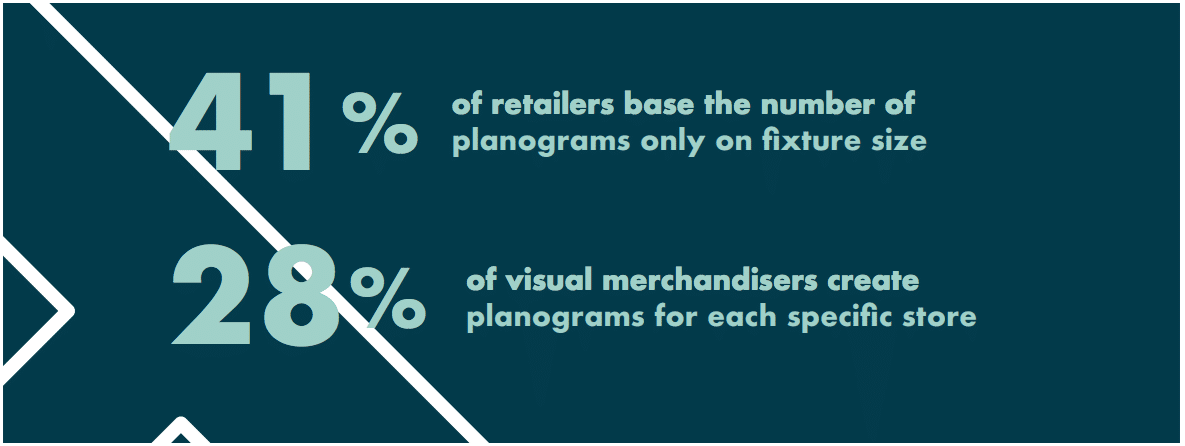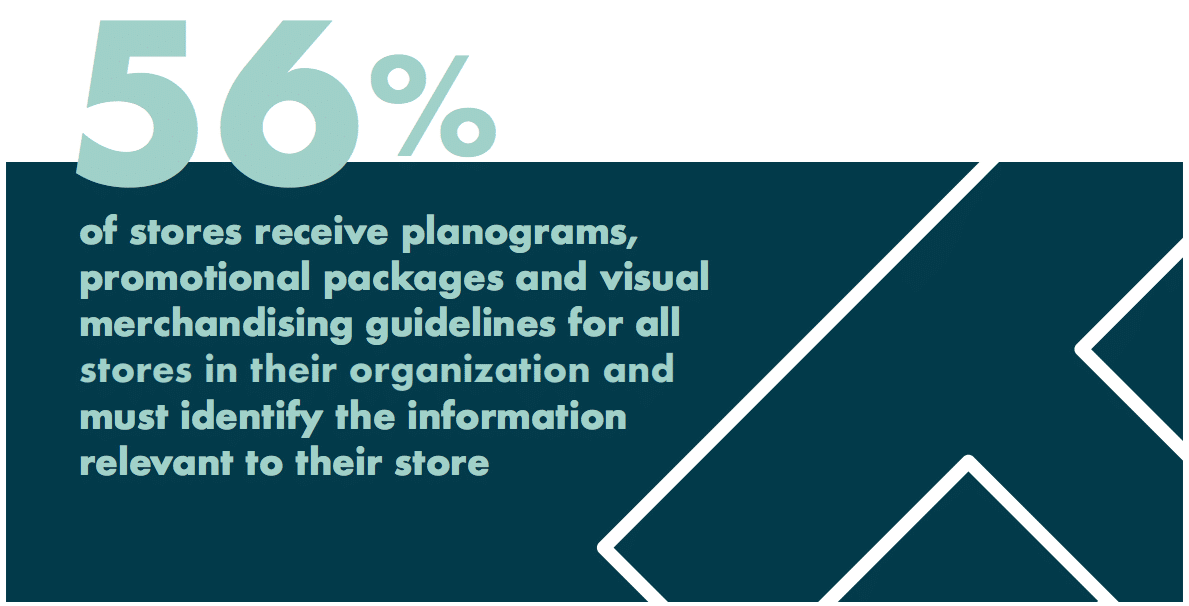How prepared are retailers to increase agility and support localization in their visual merchandising and space planning? New research from visual merchandising software firm One Door reveals important gaps in how merchandising strategies are communicated, executed and confirmed.
The study, Digital Transformation in Visual Merchandising and Space Planning—Job Done?, sought to understand, as well as assess the extent to which they have digitally transformed their visual merchandising processes.
According to the survey, the five key gaps limiting merchandising confidence and precision are as follows:
Planograms don’t match store footprints
Forty-eight percent of retailers report that planograms—diagrams that show how and where specific retail products should be placed on retail shelves—do not match fixture sizes, and 43 percent report that planograms do not match store format.
Planogramming processes are not localized or store specific
Only twenty-eight percent of visual merchandisers create planograms for each specific store.
Plans are still printed and shipped
Sixty-three percent of visual merchandisers say that their planogram materials are delivered this way.
More than half of store teams receive generic information irrelevant to their stores
In addition, 56 percent of respondents say they must identify the information relevant to their own store.
There is no formal approach to capturing store compliance or feedback
Only 15 percent of respondents use a digital app to communicate compliance or raise concerns, whereas 77 percent send feedback through email.
“Retailers today are expected to deliver new and customized experiences for consumers, tailored to each store location, at a pace that is unprecedented,” said E.Y. Snowden, president and CEO of One Door. “Our survey shows that many retailers have yet to arm their employees with the digital tools necessary to meet these expectations, and that many gaps exist in their overall merchandising processes. We hope that by identifying these gaps, retailers will better understand where to invest to truly transform their businesses.”
Download the full report here.
One Door, in partnership with Researchscape, surveyed nearly 300 in-store operations leaders, visual merchandisers and space planners, of which 41 percent came from retailers with 3,000 or more stores.













